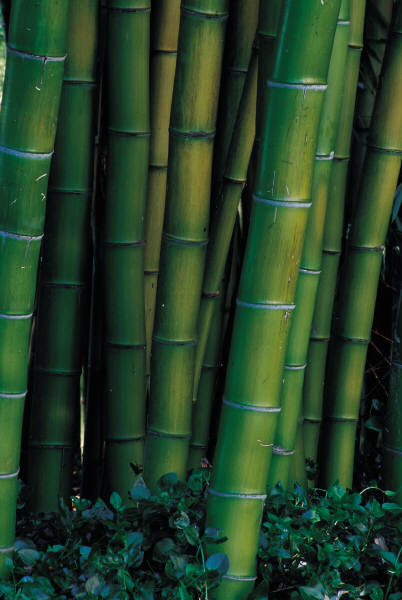Hungry? Have some Bamboo!

The most notorious Giant Panda Bear source of food is the Bamboo Plant. Bamboo provides 99% of the Giant Panda's diet. The Panda has a carnivore digestive tract, so it cannot digest cellulose which is why Bamboo gives very little nutrition to the animal. They eat constantly because of the Bamboo's low nutritional value, so they can eat up to 84 pounds of Bamboo. They generally eat 20-30 pounds of Bamboo a day. They have developed a specialized digestive tract allowing for them to eat a large amount bamboo. Adaptations There are 25 different species of the Bamboo plant that Giant Pandas have access to and eat in the wild.
Giant Pandas get the most nutritional protein from the leaves of Bamboo. The roots and stems provide less protein. Because Bamboo flowers and dies so quickly, the Pandas must have more than one species flowering in its territory so it doesn't starve.
Giant Pandas prefer new shoots as opposed to leaves and stems. They try and find the new shoots when available, and when they are not available they will eat leaves and stems with no leaves.
Pandas drink water at least once a day to keep from dehydrating. They usually live near streams so it isn't a problem finding water.
Giant Pandas are in the order Carnivora because they are technically carnivores even though for the majority of their lives they are herbivores. Phylogenetic Tree They have adapted to being herbivores, but they still have carnivorous tendencies. Giant Pandas have been known to eat fish and rodents. Bamboo is readily available though so that is their main source of food.
Ruining the forests in China by logging and farming is affecting the Giant Panda populations because it is making them move higher and higher where there isn't the abundancy of Bamboo plants. This causes some starvations of Giant Pandas. In the winter they will move back down to lower elevations which end their starvations because it allows for more Bamboo.